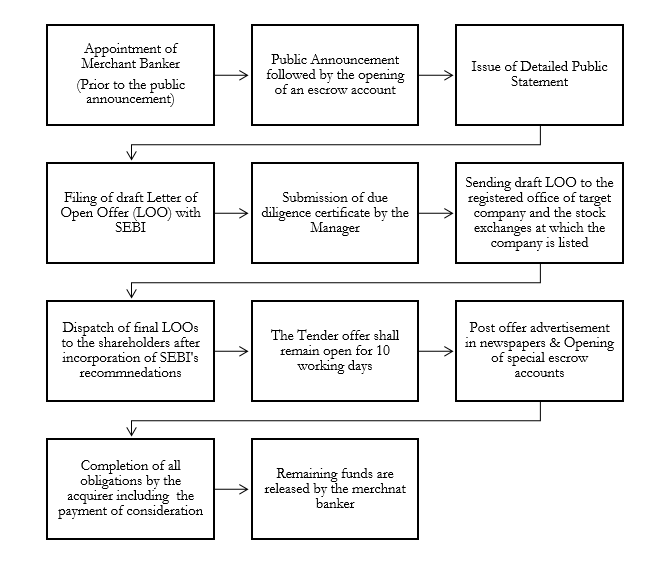Purview of Non-Compete Clauses in M&A Transactions

(Pranshu Gupta and Roopam Dadhich are IV year B.A.LL.B students at National Academy of Legal Studies & Research (NALSAR) University, Hyderabad)
INTRODUCTION
In almost every Mergers & Acquisitions (‘M&A’) contract, the presence of a provision containing non-compete obligations of the target company is a common phenomenon, and is one of the most integral parts of M&A deals. These provisions are referred to as ‘non-compete clauses’ (‘NCC’). They are included in contracts so that the valuable information such as the intellectual property, trade secrets, technical know-how etc. possessed by people related to the target company may not be used to the disadvantage of the acquiring firm post acquisition, and to save the investment value of the transaction. These provisions are governed by the exception to Section 27 of the Indian Contract Act, 1872, which permits contracts restricting a person or an entity from carrying on a similar business where the goodwill is being sold, as long as the restriction pertains only to specified reasonable limits.
NCCs in all M&A agreements need to be reviewed by the Competition Commission of India (‘CCI’) as per the CCI (Procedure in regard to the transaction of business relating to combinations) Regulations, 2011 (‘Combination Regulations’). This article discusses and analyses the legal developments with regards to NCCs and the way in which courts in India have dealt with these clauses.
In almost every Mergers & Acquisitions (‘M&A’) contract, the presence of a provision containing non-compete obligations of the target company is a common phenomenon, and is one of the most integral parts of M&A deals. These provisions are referred to as ‘non-compete clauses’ (‘NCC’). They are included in contracts so that the valuable information such as the intellectual property, trade secrets, technical know-how etc. possessed by people related to the target company may not be used to the disadvantage of the acquiring firm post acquisition, and to save the investment value of the transaction. These provisions are governed by the exception to Section 27 of the Indian Contract Act, 1872, which permits contracts restricting a person or an entity from carrying on a similar business where the goodwill is being sold, as long as the restriction pertains only to specified reasonable limits.
NCCs in all M&A agreements need to be reviewed by the Competition Commission of India (‘CCI’) as per the CCI (Procedure in regard to the transaction of business relating to combinations) Regulations, 2011 (‘Combination Regulations’). This article discusses and analyses the legal developments with regards to NCCs and the way in which courts in India have dealt with these clauses.
LEGAL DEVELOPMENTS AND JUDICIAL STANCE
At present, para 5.7 of Form I in the Combination Regulations mandates a detailed explanation and justification of NCCs present in an M&A agreement, which the CCI reviews and analyses in view of Sections 3 and 4 of the Competition Act, 2002 (‘the Act’) thereby ensuring there is no unfair impact on competition. In this regard, the CCI in 2017 released a Guidance Note wherein the scope of NCCs was specified taking into account its decisions in various cases. In this Guidance, the CCI noted that only an ‘ancillary restriction’, or a restriction that is directly related and necessary for the implementation of a transaction shall be permitted. A restriction is considered to be directly related when it is economically related to the transaction and is intended to allow a smooth transition to the post-transaction scenario.
At present, para 5.7 of Form I in the Combination Regulations mandates a detailed explanation and justification of NCCs present in an M&A agreement, which the CCI reviews and analyses in view of Sections 3 and 4 of the Competition Act, 2002 (‘the Act’) thereby ensuring there is no unfair impact on competition. In this regard, the CCI in 2017 released a Guidance Note wherein the scope of NCCs was specified taking into account its decisions in various cases. In this Guidance, the CCI noted that only an ‘ancillary restriction’, or a restriction that is directly related and necessary for the implementation of a transaction shall be permitted. A restriction is considered to be directly related when it is economically related to the transaction and is intended to allow a smooth transition to the post-transaction scenario.
The necessity of a non-compete restriction should be assessed in terms of whether, in the absence of such restriction, the transaction can be implemented or whether it will be more onerous on the parties. If it is not directly related and necessary to the transaction, the CCI will approve the combination without approving the non-compete restriction. In such cases, the CCI’s order would state that the non-compete restriction is not “ancillary” to the combination. However, the finding that a non-compete restriction is not in compliance of the Guidance does not mean it infringes the provisions of the Act. Moreover, the standards set forth in the Guidance would not be applied mechanically, and would be applied taking into consideration the facts and circumstances of each case. The Guidance Note released by the CCI is similar to the Ancillary Note released by the European Commission which envisages similar guidelines for assessment of ancillary restraints in merger deals.
Recently, the CCI in its press release dated May 15, 2020 proposed to omit para 5.7 of Form I in the Combination Regulations which requires the parties to submit a detailed explanation and justification of NCCs under the agreement. The intention is to provide flexibility to the parties in determining non-compete restrictions and reduce the information burden on the CCI by transferring the onus to the parties. Moreover, the rationale was that prescribing a general set of standards for assessment of non-compete restrictions may not be appropriate in modern business environments. Further, conducting a detailed examination on a case by case basis as part of the combination review process may not be feasible considering the tight time cap of 210 days for combination approvals prescribed under the Act. However, the Guidance still holds ground and the parties need to self-assess if the NCC is ancillary to the transaction and no issues arise under Sections 3 and 4 of the Act.
The question of NCCs being ancillary to the transactions depends upon the factual matrix of each case. However, an analysis of the past decisions of courts and the CCI could help companies determine the general approach/standards observed by courts and the CCI while reviewing NCCs in M&A transactions. In Orchid Chemicals, the first ever case on NCC, the CCI found the provision on non-compete restrictive of competition, where Orchid Chemicals and the promoter were restricted for 8 years and 5 years respectively to carry out similar business activities. It was observed that non-compete obligations should be reasonable, particularly in respect of geographical limits, business activities, the duration over which such restraint was enforceable and the people subject to such restraint, in order to ensure that there is no adverse impact on competition. Pursuant to this observation of the CCI, the parties had to modify the term of the NCC to 4 years for both the company and the promoter. The parties also modified the NCC to permit research, development and testing of certain new active pharmaceutical ingredients.
In Affle Holdings v. Saurabh Singh, the Delhi High Court upheld a share purchase agreement which restricted the promoter from engaging in a similar business for 36 months. The duration of such non-compete was found reasonable by the court. In Mylan Inc., the CCI did not uphold the NCC and the parties thereby revised it to cover only those products that were produced or sold by the target company, allowing the promoters of the target company to conduct research and development of new active pharmaceutical ingredients. They were also compelled to reduce the non-compete duration from 6 years to 4 years. In Crompton Greaves Consumer Electricals, the CCI approved the NCC only when the parties agreed to modify the duration of non-compete from 5 years to 3 years.
It is therefore, evident that the CCI has in a number of cases compelled parties to modify NCCs on lines of the Guidance which lays down the duration of an NCC for a period of up to 2 years in case of transfer of goodwill and 3 years in cases of transfer of goodwill and know-how. Even though the CCI has done away with the requirement for the parties to provide a detailed assessment and justification of the non-compete restriction, the judicial precedents along with the Guidance can help counsels of both the parties to determine the CCI’s expectations in terms of the duration, geographical limits, business activities etc. of NCCs in the agreement, as they still need to conduct a comprehensive self-assessment of such clauses in light of the competition law as the CCI will still review transaction documents and approve a combination only when it does not go against Sections 3 and 4 of the Act.
Recently, the CCI in its press release dated May 15, 2020 proposed to omit para 5.7 of Form I in the Combination Regulations which requires the parties to submit a detailed explanation and justification of NCCs under the agreement. The intention is to provide flexibility to the parties in determining non-compete restrictions and reduce the information burden on the CCI by transferring the onus to the parties. Moreover, the rationale was that prescribing a general set of standards for assessment of non-compete restrictions may not be appropriate in modern business environments. Further, conducting a detailed examination on a case by case basis as part of the combination review process may not be feasible considering the tight time cap of 210 days for combination approvals prescribed under the Act. However, the Guidance still holds ground and the parties need to self-assess if the NCC is ancillary to the transaction and no issues arise under Sections 3 and 4 of the Act.
The question of NCCs being ancillary to the transactions depends upon the factual matrix of each case. However, an analysis of the past decisions of courts and the CCI could help companies determine the general approach/standards observed by courts and the CCI while reviewing NCCs in M&A transactions. In Orchid Chemicals, the first ever case on NCC, the CCI found the provision on non-compete restrictive of competition, where Orchid Chemicals and the promoter were restricted for 8 years and 5 years respectively to carry out similar business activities. It was observed that non-compete obligations should be reasonable, particularly in respect of geographical limits, business activities, the duration over which such restraint was enforceable and the people subject to such restraint, in order to ensure that there is no adverse impact on competition. Pursuant to this observation of the CCI, the parties had to modify the term of the NCC to 4 years for both the company and the promoter. The parties also modified the NCC to permit research, development and testing of certain new active pharmaceutical ingredients.
In Affle Holdings v. Saurabh Singh, the Delhi High Court upheld a share purchase agreement which restricted the promoter from engaging in a similar business for 36 months. The duration of such non-compete was found reasonable by the court. In Mylan Inc., the CCI did not uphold the NCC and the parties thereby revised it to cover only those products that were produced or sold by the target company, allowing the promoters of the target company to conduct research and development of new active pharmaceutical ingredients. They were also compelled to reduce the non-compete duration from 6 years to 4 years. In Crompton Greaves Consumer Electricals, the CCI approved the NCC only when the parties agreed to modify the duration of non-compete from 5 years to 3 years.
It is therefore, evident that the CCI has in a number of cases compelled parties to modify NCCs on lines of the Guidance which lays down the duration of an NCC for a period of up to 2 years in case of transfer of goodwill and 3 years in cases of transfer of goodwill and know-how. Even though the CCI has done away with the requirement for the parties to provide a detailed assessment and justification of the non-compete restriction, the judicial precedents along with the Guidance can help counsels of both the parties to determine the CCI’s expectations in terms of the duration, geographical limits, business activities etc. of NCCs in the agreement, as they still need to conduct a comprehensive self-assessment of such clauses in light of the competition law as the CCI will still review transaction documents and approve a combination only when it does not go against Sections 3 and 4 of the Act.
CONCLUDING REMARKS
This seems to be a step in the right direction by the CCI, especially when attracting foreign capital and investments is a major goal for the country; which would have been difficult earlier owing to the onerous formalities of the CCI and its stringent compliance mechanisms. Till now, parties with their counsels’ assistance have already been conducting a detailed self-assessment of non-compete restrictions to ensure compliance of the competition law. However, the CCI while reviewing merger deals has in numerous cases held NCCs to be anti-competitive and non-ancillary, without providing any justification/analysis whatsoever. With this amendment, the process would become more efficient without compromising on the requirement of the parties to undertake a comprehensive anti-trust self-assessment of NCCs in M&A deals.
This seems to be a step in the right direction by the CCI, especially when attracting foreign capital and investments is a major goal for the country; which would have been difficult earlier owing to the onerous formalities of the CCI and its stringent compliance mechanisms. Till now, parties with their counsels’ assistance have already been conducting a detailed self-assessment of non-compete restrictions to ensure compliance of the competition law. However, the CCI while reviewing merger deals has in numerous cases held NCCs to be anti-competitive and non-ancillary, without providing any justification/analysis whatsoever. With this amendment, the process would become more efficient without compromising on the requirement of the parties to undertake a comprehensive anti-trust self-assessment of NCCs in M&A deals.
However, more efficiency can be ensured if the CCI becomes less stringent in terms of reviewing these clauses and takes into account facts and circumstances of each case, departing from its standards created through judicial decisions and the Guidance Note. Treating certain transactions as exceptions is essential especially in dynamic and other stable industries (where customer loyalty is for a longer period or an industry which is highly capital intensive) which would justify a longer non-compete period, and at the same time not casting an adverse impact on competition. Therefore, the implementation of ancillary restrictions necessitates a balance between sustaining fair competition in the market and stimulating a healthy business transaction.









